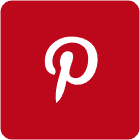BEP Packaging provides comprehensive custom printing and packaging services, offering a variety of products such as packaging boxes, gift boxes, paper bags, corrugated color boxes and displays, cylindrical packaging, and more. To help you quickly understand printing knowledge, here is a brief introduction.
Main printing methods
1. Offset Printing: This method is stable in quality and process. It is commonly used for newspapers, books, packaging, PVC, and stickers. It offers high precision and consistency in mass production.
2. Gravure Printing: Typically used for high-quality and large-volume printing products, such as cigarette packaging, wine labels, instant noodle bags, and candy wrappers. It provides excellent print quality, making it ideal for products requiring intricate detail.
3. Screen Printing: Known for its flexibility, screen printing can be applied to very small print runs, even as low as a few dozen sheets. It can print on surfaces of various shapes, including curved ones, with a thick ink layer. Due to its ability to change screen mesh size, special effects can be achieved using inks like pearlescent or textured UV inks.
4. Flexographic Printing: This method is particularly advantageous for printing on a wide range of materials, especially for plastic products and corrugated boxes. It excels in packaging printing due to its adaptability.
5. Inkjet Printing: Initially used for printing anti-counterfeit barcodes, inkjet printing has now expanded to include high-precision prints, especially for short-run jobs. One of its main advantages is its nearly unlimited print size. It has found a stable market, particularly in digital proofing.
6. Pad Printing: Similar to stamping, pad printing can print on various shaped substrates, such as toothpaste tubes. It generally offers faster speeds than screen printing.
7. Digital Printing: Represented by products like Heidelberg’s DI series, Roland’s DICOweb, and HP Indigo, as well as Xerox's offerings. Digital printing is highly advantageous for short-run jobs due to its minimal preparation time. It has become increasingly popular, and the market trend for this technology is clearly on the rise. Inkjet printing is sometimes included in this category.
Common Printed Materials (Classified by End Products):
1. Office Supplies: These include items related to office work, such as letterheads, envelopes, and office forms.
2. Promotional Materials: This category covers a variety of printed items used for company or product promotion, including visual identity (VI) manuals, posters, flyers, brochures, product catalogs, desk calendars, wall calendars, invitations, and paper shopping bags.
3. Production-related Items: This refers to large quantities of printed products directly related to production, such as packaging boxes and adhesive labels.
Printing Workflow:
1. Pre-press: Refers to all the work done before actual printing. This typically includes photography, design, layout, typesetting, and film output.
2. Press: The actual printing stage, where the final product is printed using printing machines.
3. Post-press: Refers to post-print processing, including tasks such as cutting, lamination, die-cutting, gluing, and mounting. These steps are often used for promotional materials and packaging products.
Main Printing-related Equipment:
1. Pre-press Equipment: Includes film output machines, proofing machines, computers, color inkjet printers, laser scanners, etc.
2. Printing Equipment:
- Rotary Printing Press: Used for printing newspapers, books, magazines, and brochures.
- Classified by the size of the printing area, such as full-size presses, half-size presses, quarter-size presses, and eighth-size presses.
- Based on the number of colors they can print, they are classified as single-color presses, two-color presses, and four-color presses.
- Printing machines can be operated manually, mechanically, or fully automatically via computer systems.
3. Post-press Equipment: Includes page separators, paper cutters, hot stamping machines, embossing machines, die-cutting machines, coding machines, lamination machines, binding machines, and other post-print processing equipment.
4. Other Printing Equipment: Specialized machines for adhesive label printing, continuous form printing (computer forms), business card printers, high-speed duplicators, photocopiers, packaging and carton printing machines, etc.
Leading Printing Equipment in China:
Focusing on four-color presses, the most popular equipment includes:
- Heidelberg (Eighth-size, Origin: Germany)
- KBA (Half-size, Origin: Germany)
- Komori (Origin: Japan)
- Ryobi (Quarter-size, Origin: Japan)
- Manroland (Origin: Germany)
- Guanghua (Origin: Shanghai, China)
What is a Four-color Printing?
1. What is Four-color Printing?
Four-color printing refers to the printing process that uses the four basic ink colors: cyan, magenta, yellow, and black (CMYK). These colors are combined to reproduce a wide range of colors found in the original image or artwork.
2. What is Spot Color Printing?
Spot color printing uses inks other than the standard CMYK inks to reproduce specific colors. This process is often used in packaging printing to print large areas of solid colors that cannot be accurately achieved with the four-color process alone.
3. What Products Require Four-color Printing?
Products like photographs captured through color photography, colorful artwork by painters, or any image containing a variety of colors, must use the four-color printing process. This is typically required for technical or economic reasons, where the image is first scanned and separated into cyan, magenta, yellow, and black, and then printed using the four-color process to recreate the original.
Printing paper types and specifications
1. Paper Units:
- Gram (g): The weight of one square meter of paper.
- Ream: A unit of 500 sheets of paper (factory standard).
- Ton: A standard unit of 1,000 kilograms, used for calculating paper prices.
2. Paper Specifications and Names:
- Common Paper Sizes:
1. Standard Paper (Regular Size): 1092 mm x 787 mm.
2. Large Paper: 1194 mm x 889 mm.
3. Carbonless Paper: Available in both standard and large sizes, with three types: top sheet, middle sheet, and bottom sheet. Prices vary depending on the sheet type, with the middle sheet being the most expensive.
- Common Paper Types:
1). Typing Paper (Colored Typing Paper):
28g in standard size; used for multipart forms and documents. It comes in seven colors: white, yellow, blue, green, etc.
2). Glossy Paper:
28-40g in standard size; glossy on one side. It is used for multipart forms, notepads, and is a low-grade printing paper.
3). Writing Paper:
55-100g in both large and standard sizes; used for low-grade printed materials, with domestic paper being the most common.
4). Offset Paper (Double Adhesive Paper):
60-150g in both large and standard sizes; used for mid-grade printed materials, commonly available as domestic, joint venture, and imported types (e.g., 60g, 70g, 80g, 100g, 120g, 150g).
5). Newsprint:
55-60g in rolls or standard size; commonly used for printing newspapers.
6). Carbonless Paper:
47-52g in both large and standard sizes; has a self-copying function, with distinct top, middle, and bottom sheets that cannot be interchanged. Available in seven colors and commonly used for multipart forms and documents.
7). Coated Paper (Art Paper):
80-300g in both standard and large sizes; used for high-grade printed materials (e.g., 80g, 105g, 128g, 157g, 200g, 230g, 250g, 300g).
8). Matte Coated Paper:
105-300g, used for elegant, high-quality color printing (e.g., 105g, 128g, 157g, 200g, 230g, 250g, 300g).
9). Grey Back Whiteboard Paper (Whiteboard Paper, Grey Back Paper):
Over 250g; white front and grey back, used for packaging.
10). White Cardboard:
230-300g; white on both sides, used for mid-range packaging (e.g., 210g, 230g, 250g, 300g, 350g).
11). Kraft Paper:
80-150g, used for packaging, cartons, file folders, and envelopes. White kraft paper is available in 60g, 80g, 100g, 120g, 150g varieties.
Common Paper Choices and Printing Techniques for Different Print Products:
1. Folder Covers:
- Paper: 250g-300g matte coated paper or art paper.
- Process: Laminated with a glossy or matte finish on the outside, often with die-cutting techniques.
- Inner Pages: 128g-200g matte coated paper or art paper.
2. Brochures and Catalogs:
- Cover: 200g-250g matte coated paper or art paper.
- Inner Pages: 128g-200g matte coated paper or art paper.
- Process: The cover and back are laminated with a glossy or matte finish.
3. Posters:
- Paper: 157g-200g matte coated paper or art paper.
- Process: Single-sided printing.
4. Hanging Banners:
- Paper: 200g-300g matte coated paper or art paper.
- Process: Double-sided printing, with glossy or matte lamination. Die-cutting can be used for special shapes.
5. Flyers:
- Paper: 128g-200g matte coated paper or art paper.
6. Paper Bags:
- Paper: 200g-300g matte coated paper, art paper, or white cardboard.
- Process: Laminated on the outside for durability.
7. Forms, Letterheads, and Notepads:
- Paper: 70g-100g offset paper.
- Process: Often printed with spot colors.
8. Envelopes and File Folders:
- Paper: 100g-150g offset paper or kraft paper.
- Process: Often printed with spot colors.
BEP Packaging offers comprehensive printing and packaging services, specializing in custom packaging solutions for various industries. We provide a wide range of products, including packaging boxes, gift boxes, paper bags, corrugated color boxes and displays, cylindrical packaging, cards, and commercial printing service. Our services are tailored to meet your brand's specific needs, ensuring high-quality and visually appealing packaging. For personalized packaging solutions that enhance your brand, feel free to contact us for professional and reliable service.
YOU MAY ALSO LIKE

What is sustainable packaging
2023-05-05 02:03:21
Integrated packaging solutions for brands
2023-07-15 07:23:59
Reducing Waste and Increasing Recycling
2023-07-18 04:01:48
Promote sustainable practices throughout the supply chain
2023-07-18 06:35:56
Focus on eco-friendly materials
2023-07-18 07:04:38
The packaging solution tailored for a specific product
2023-07-18 07:32:16POPULAR POSTS








